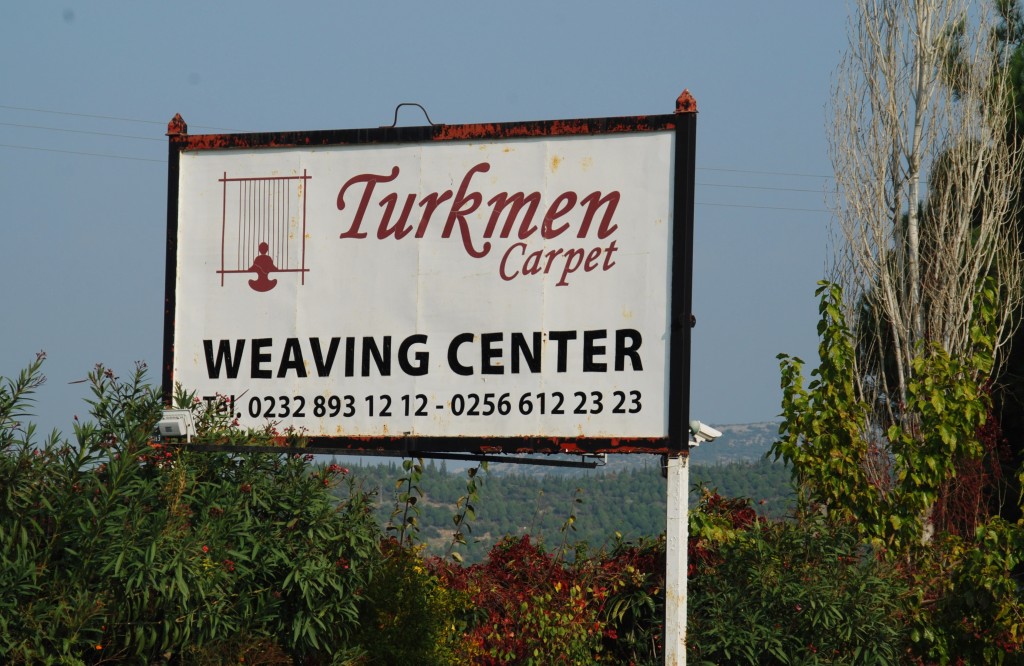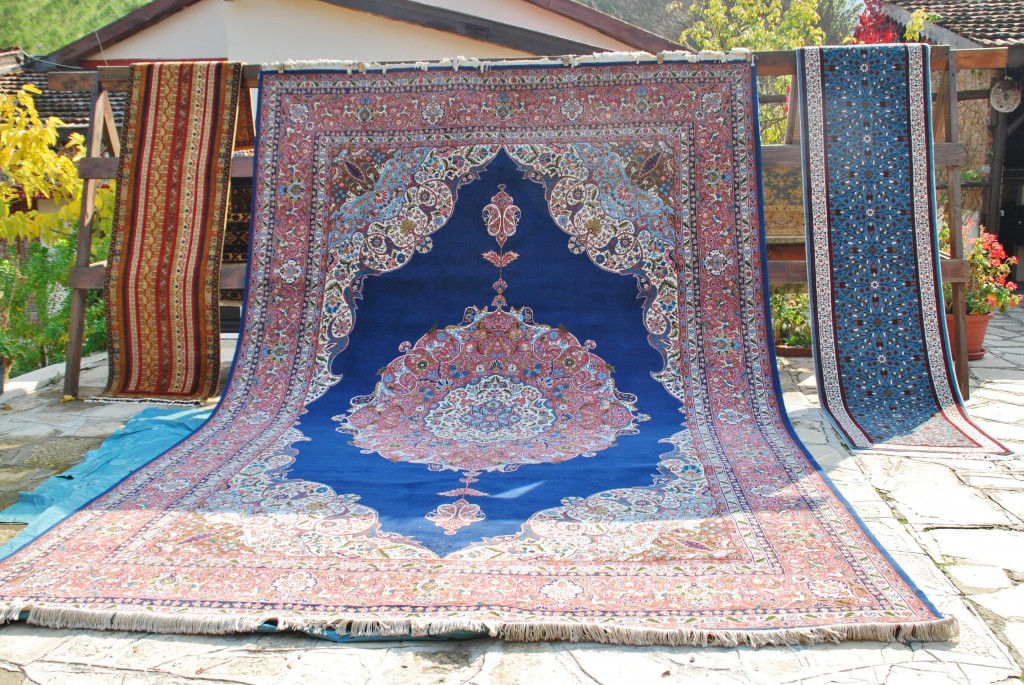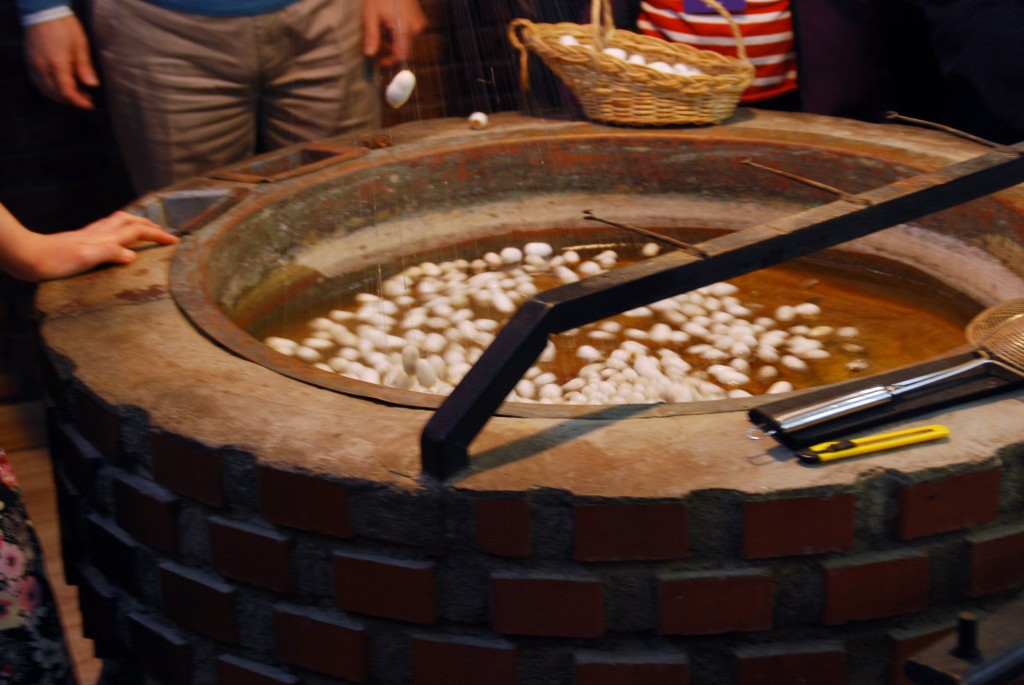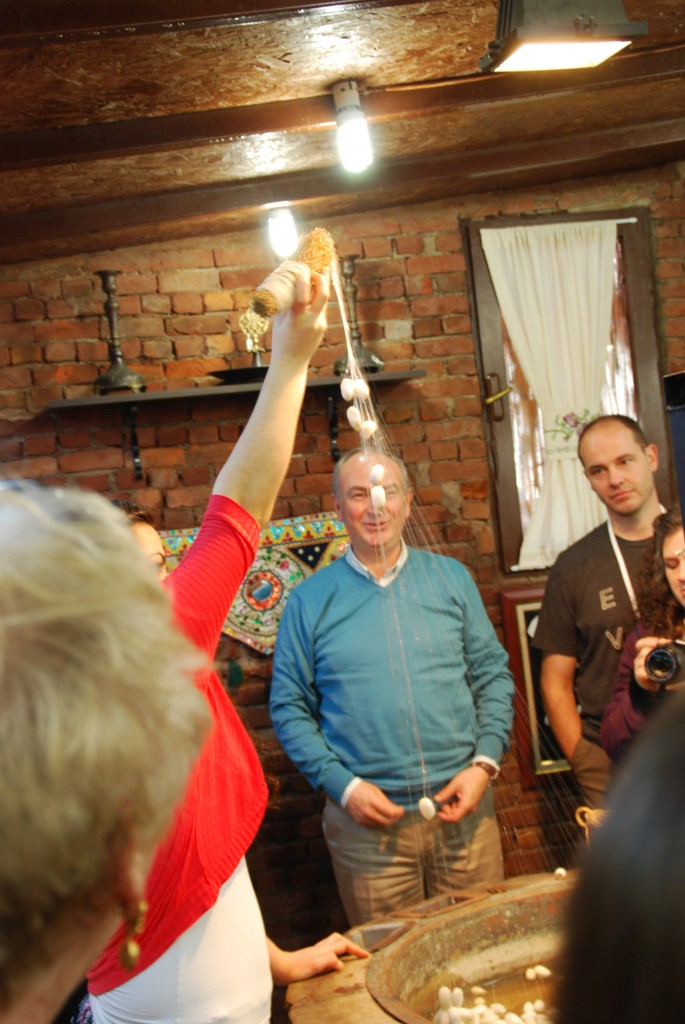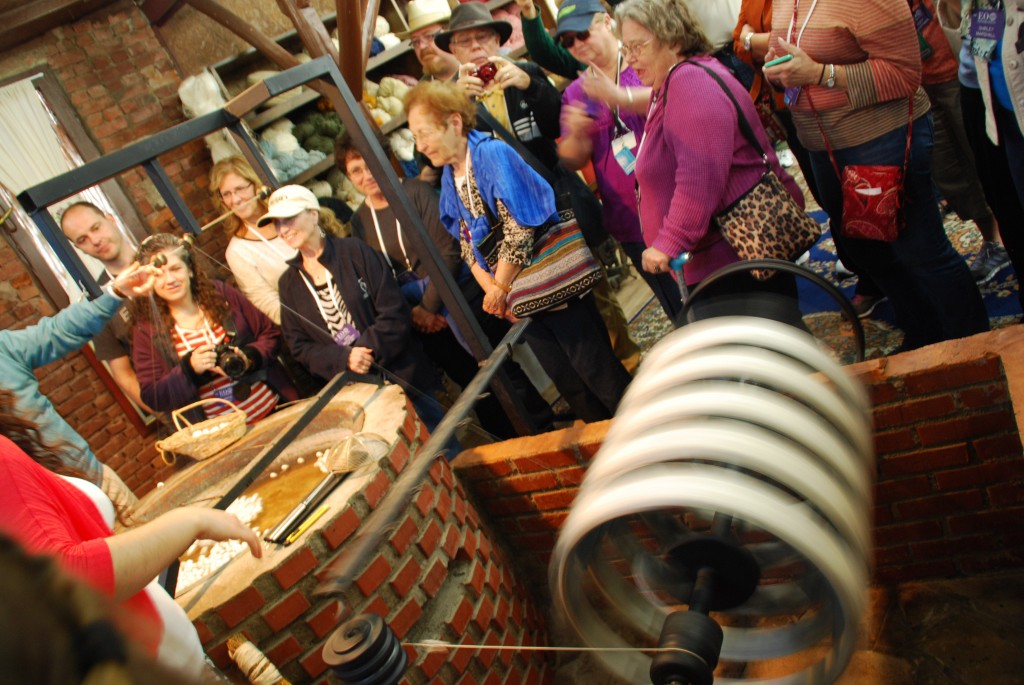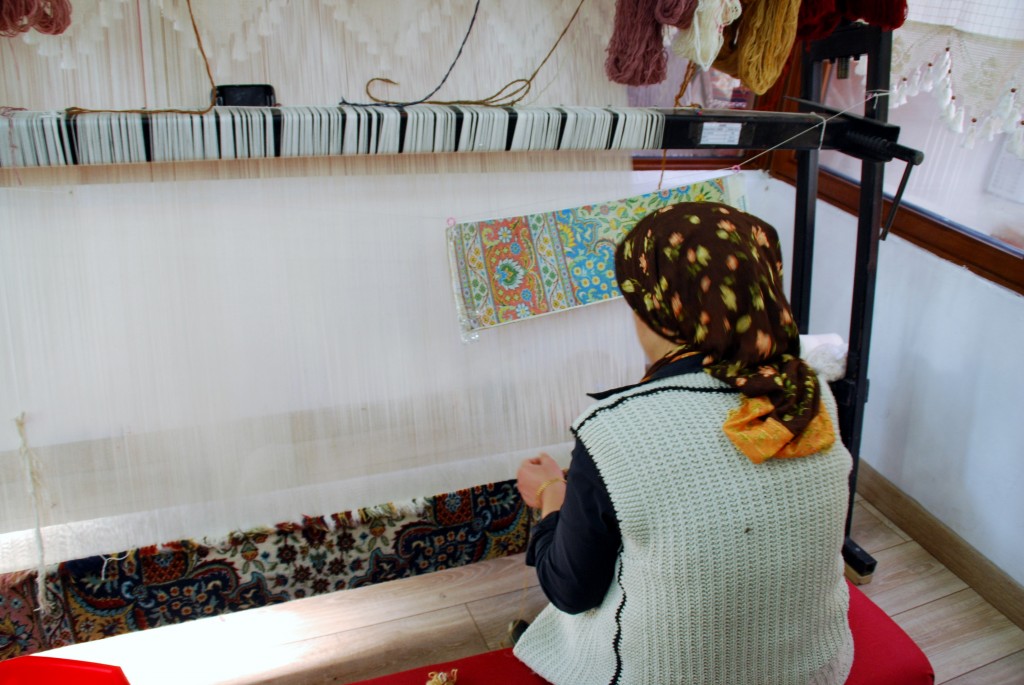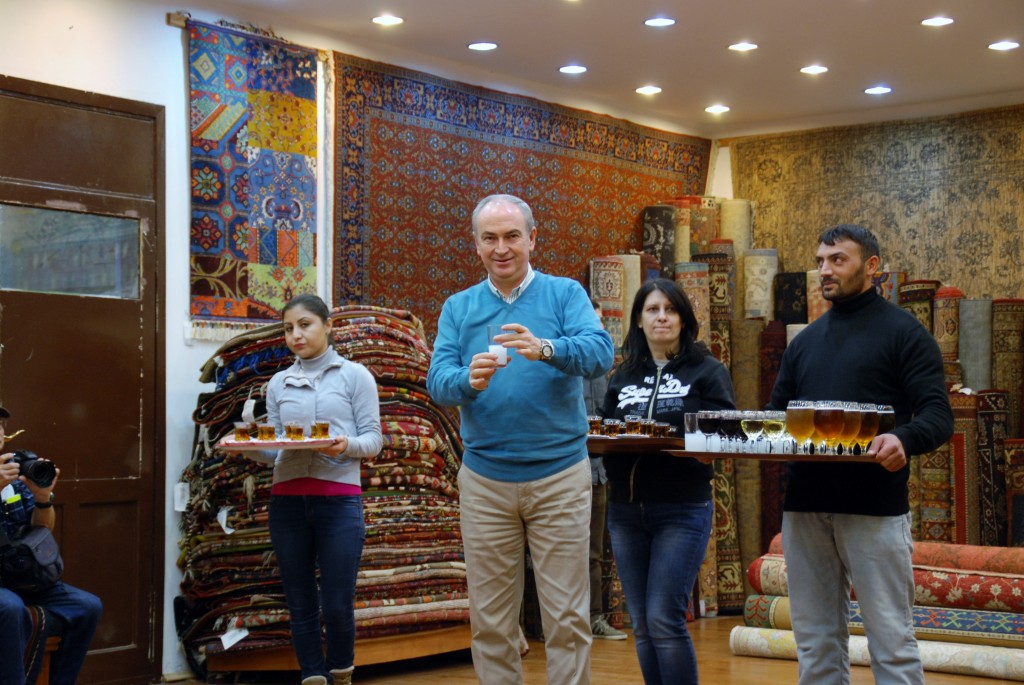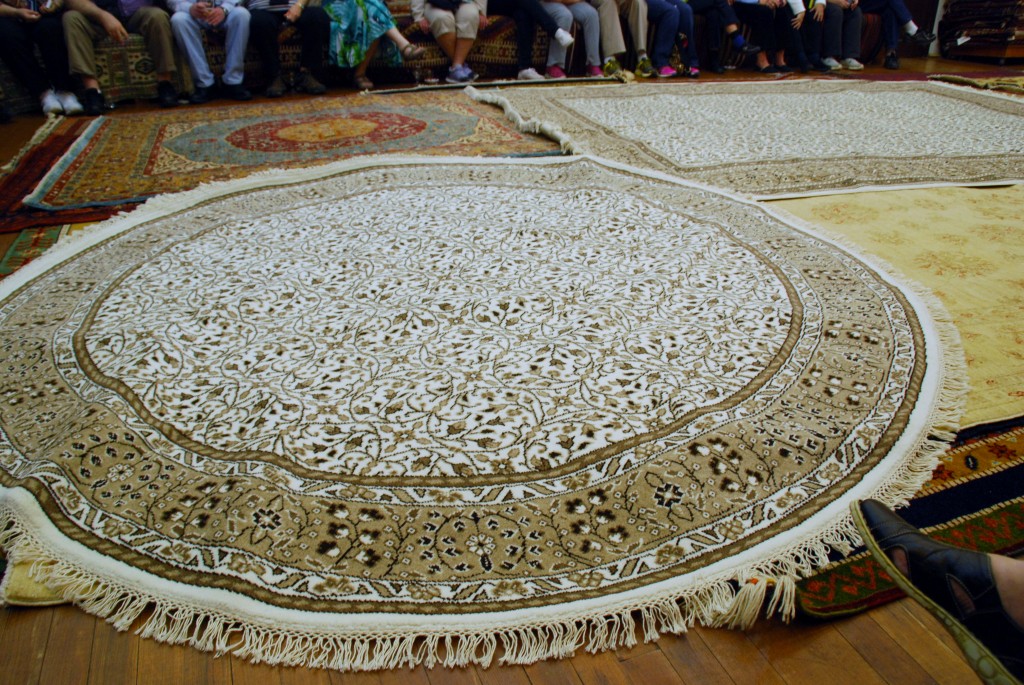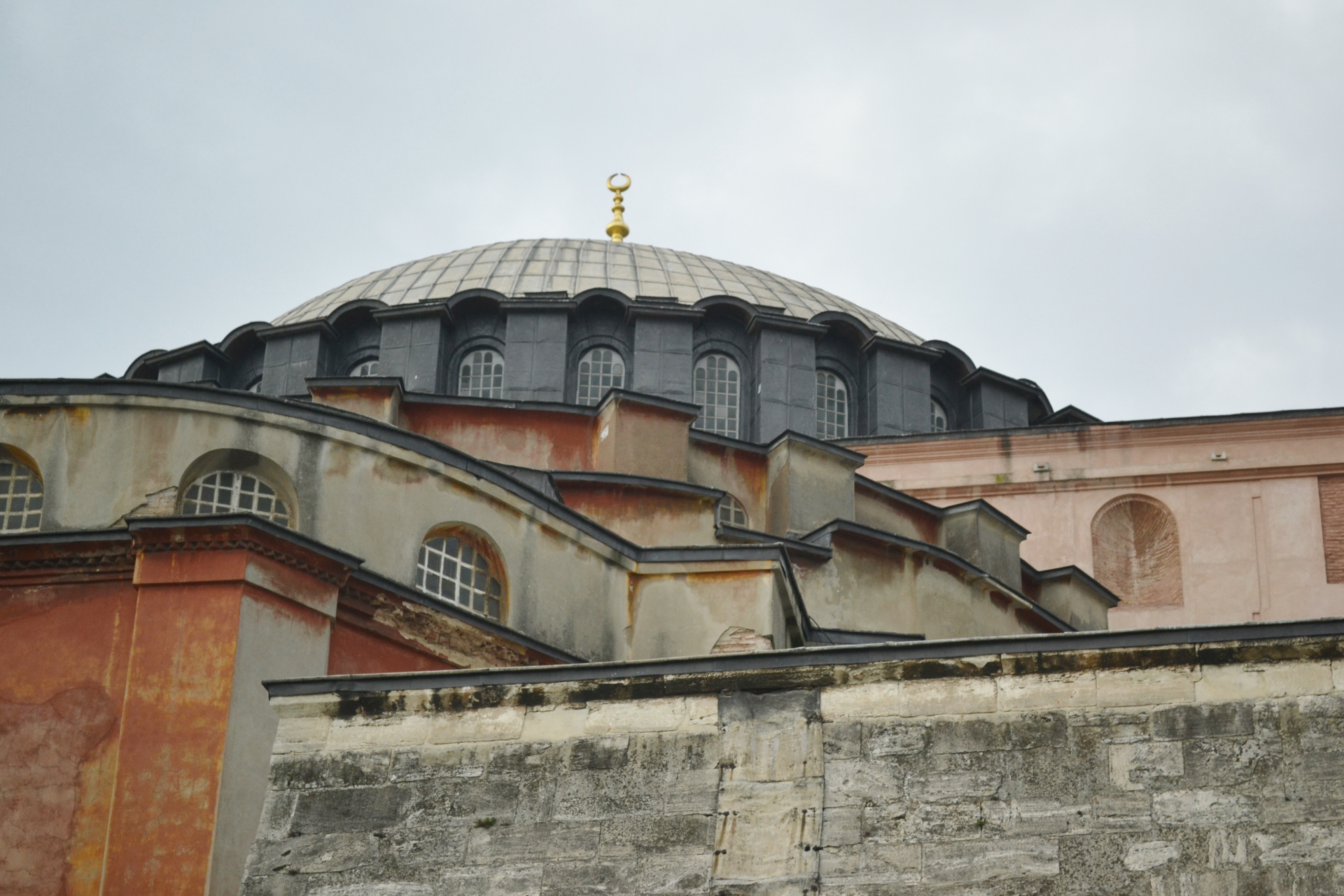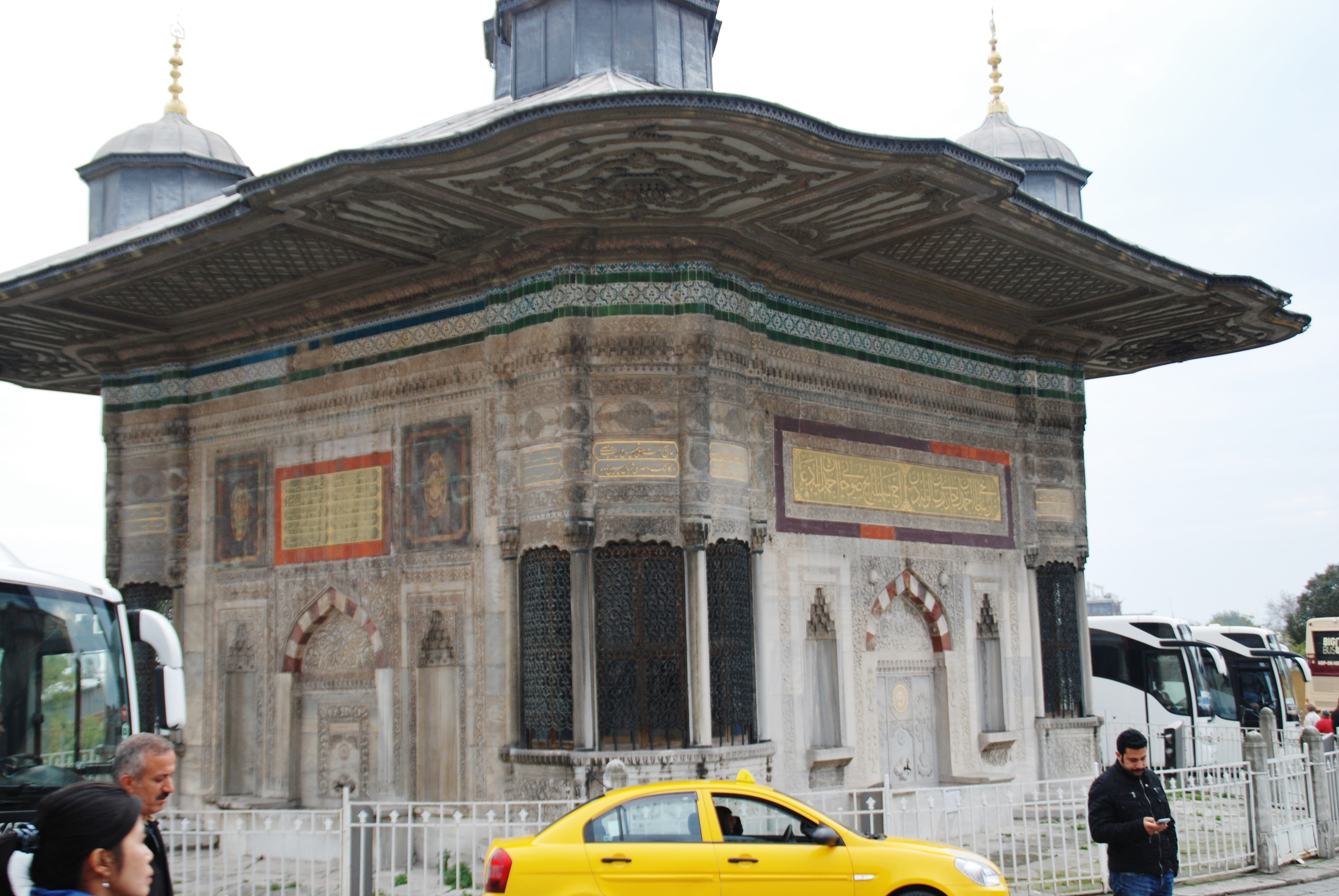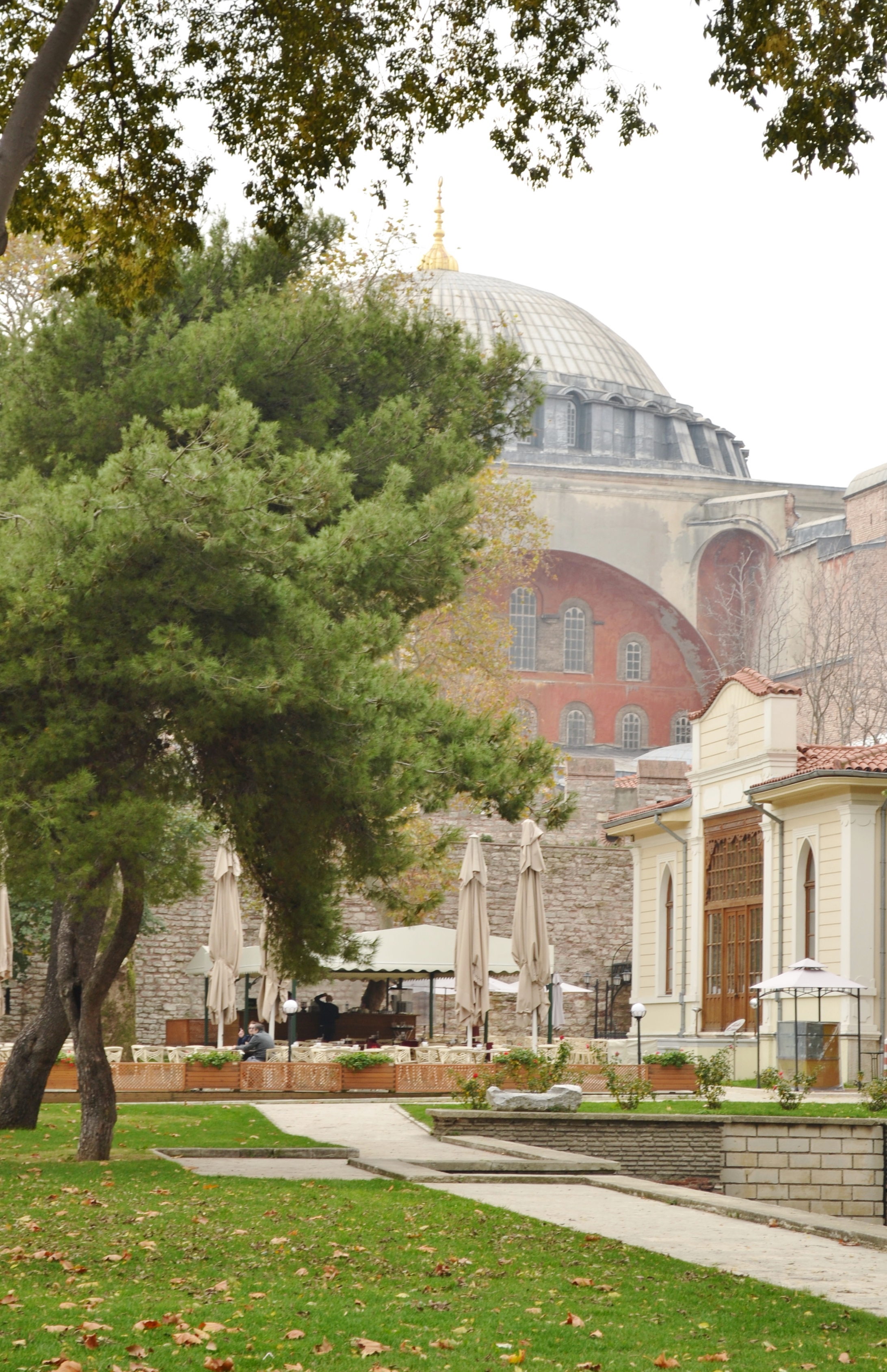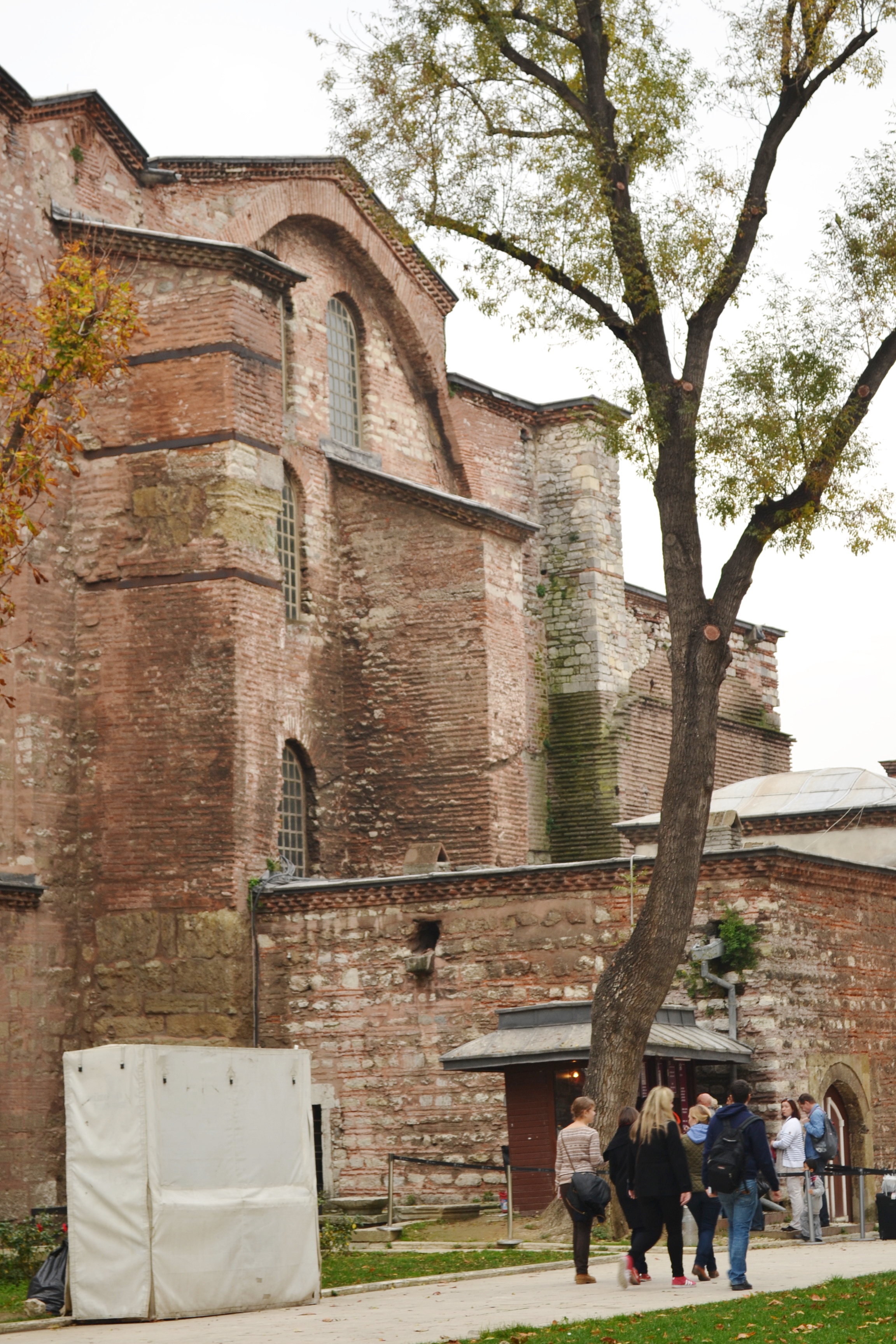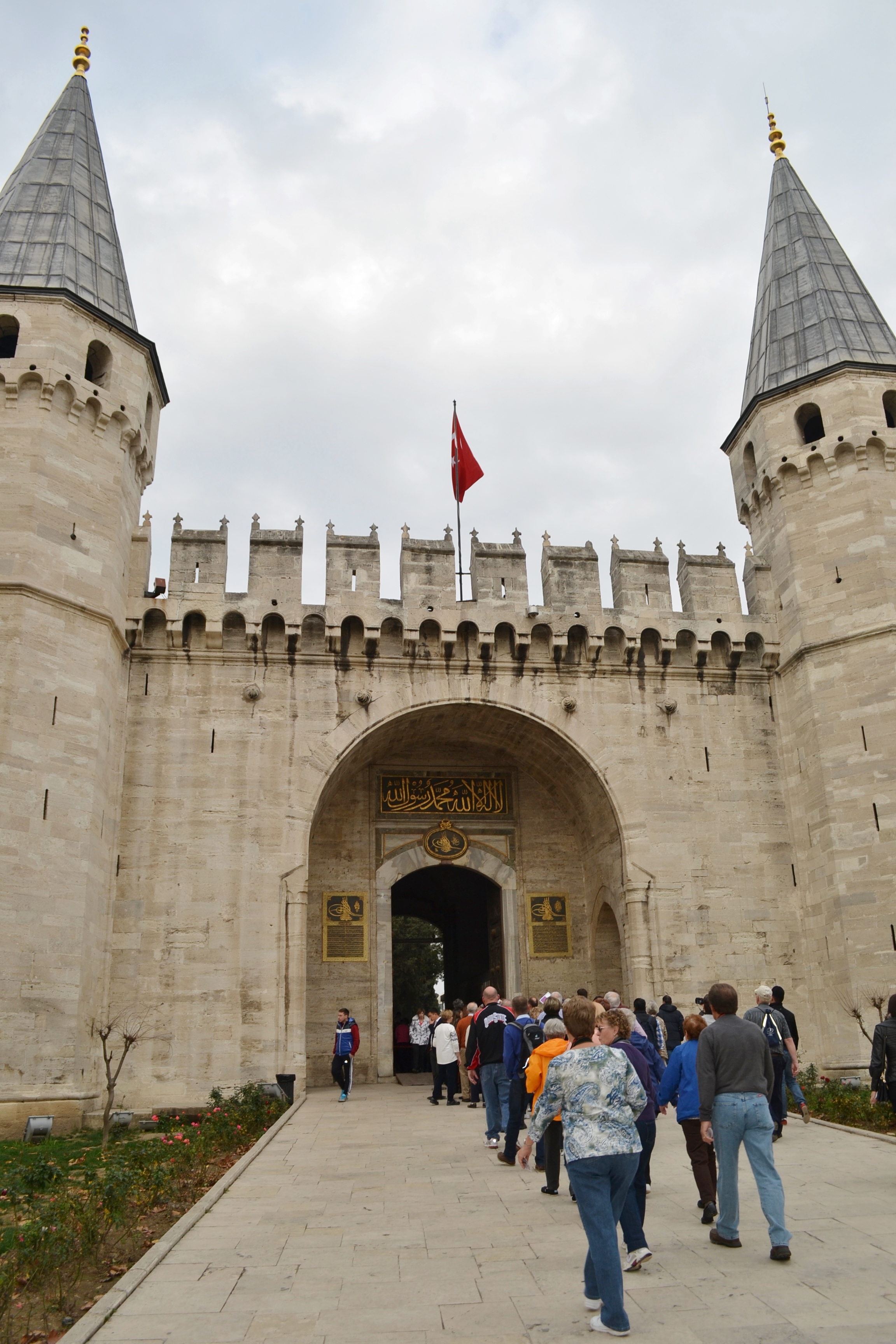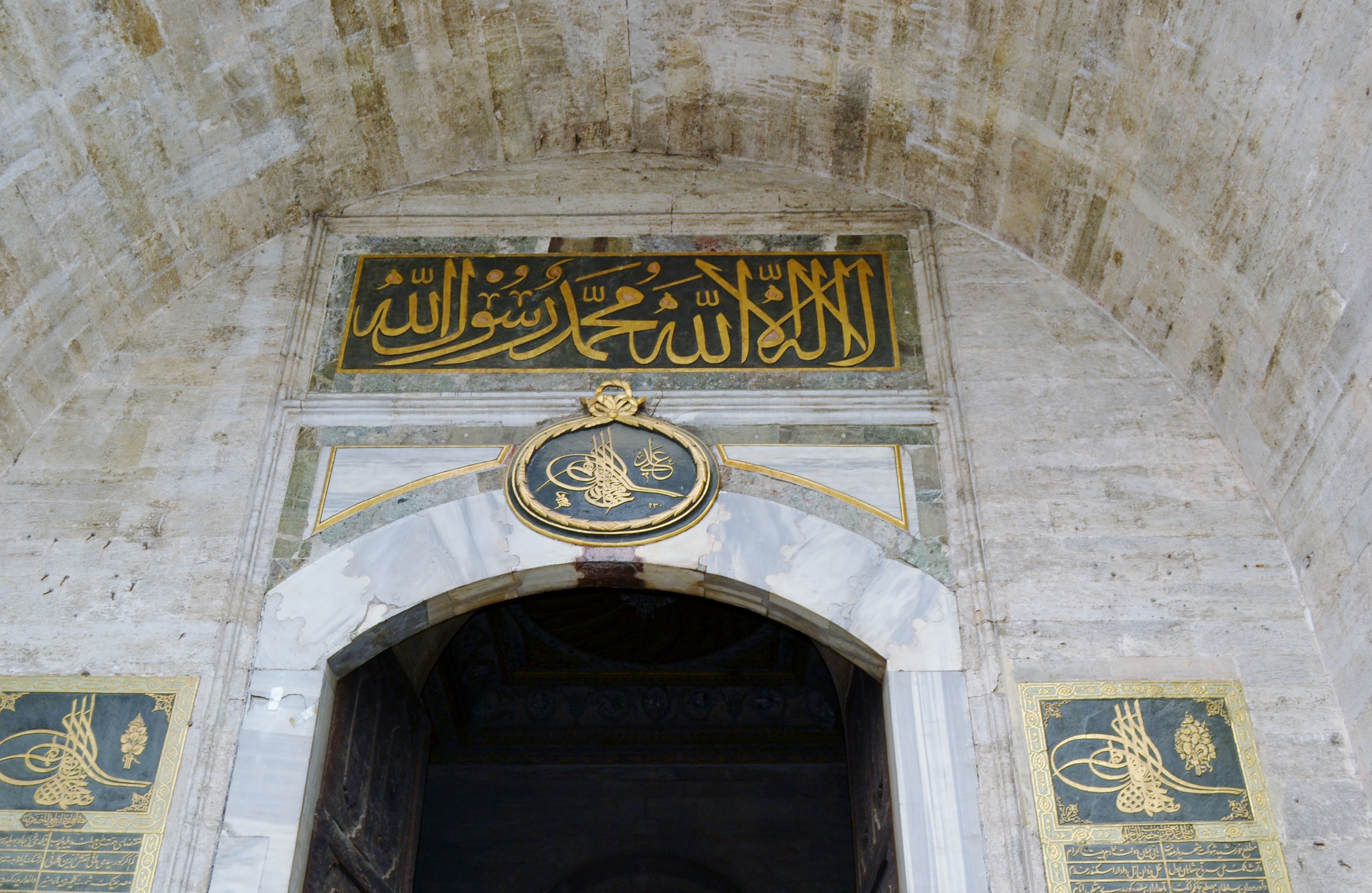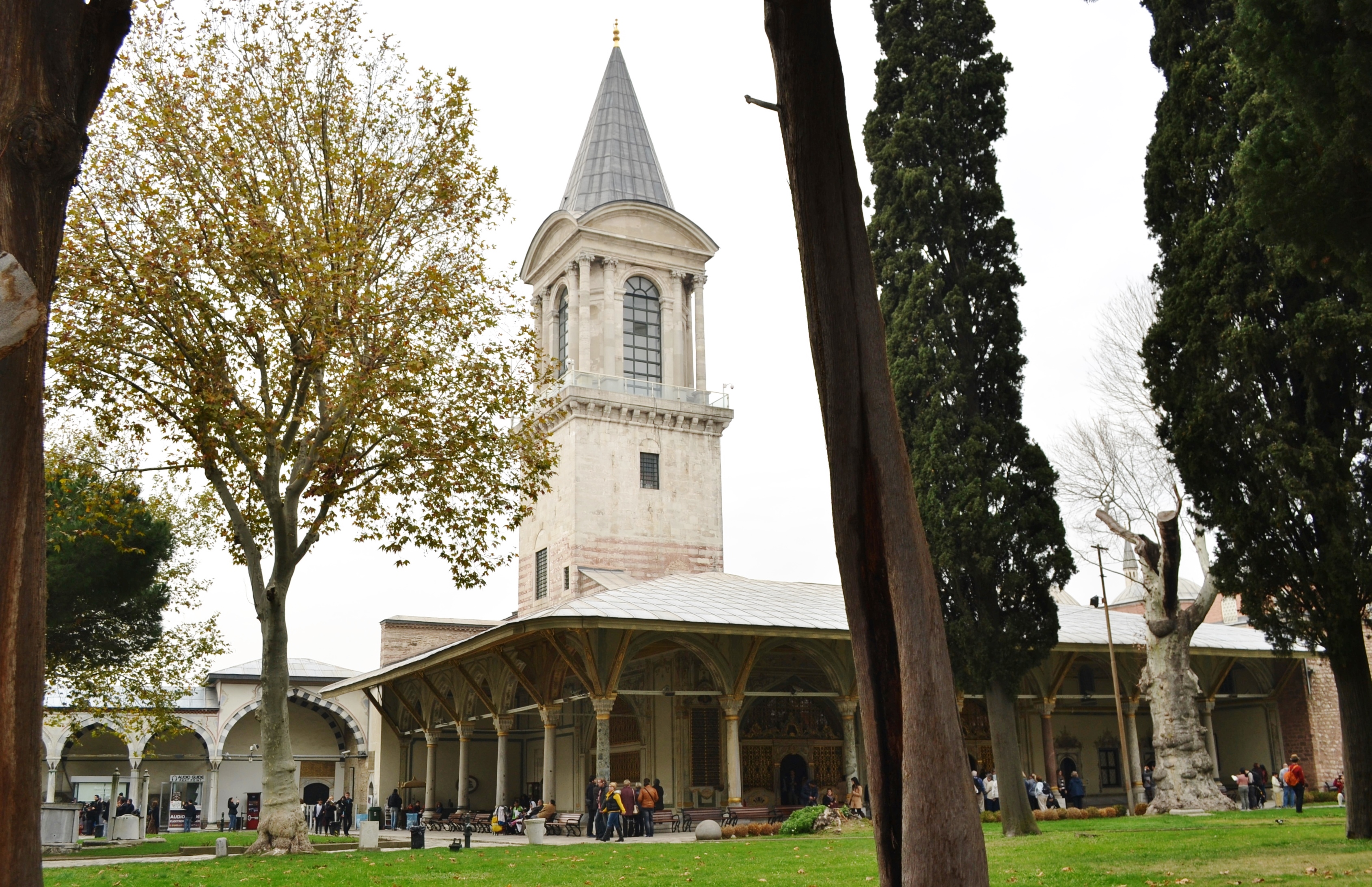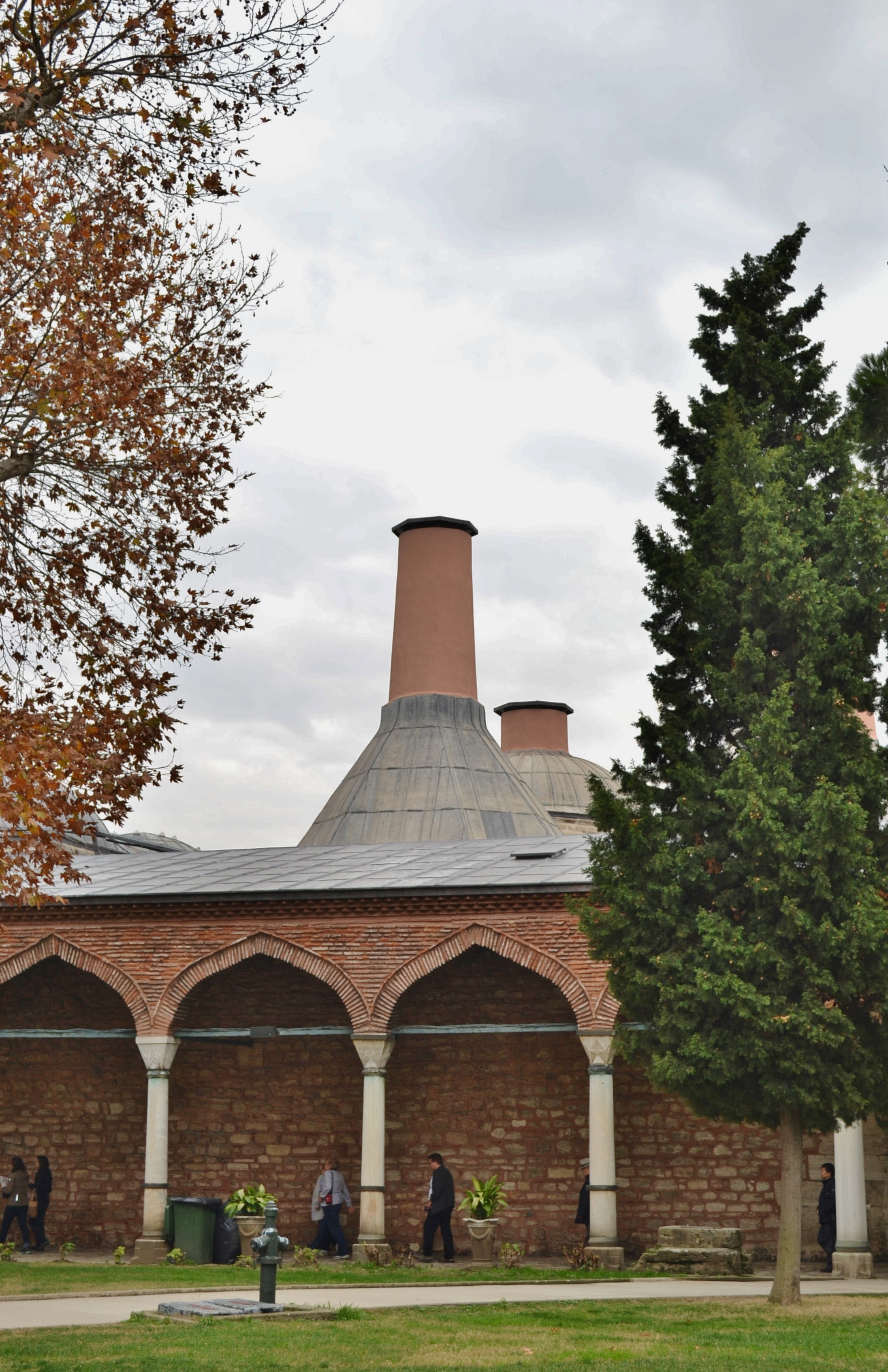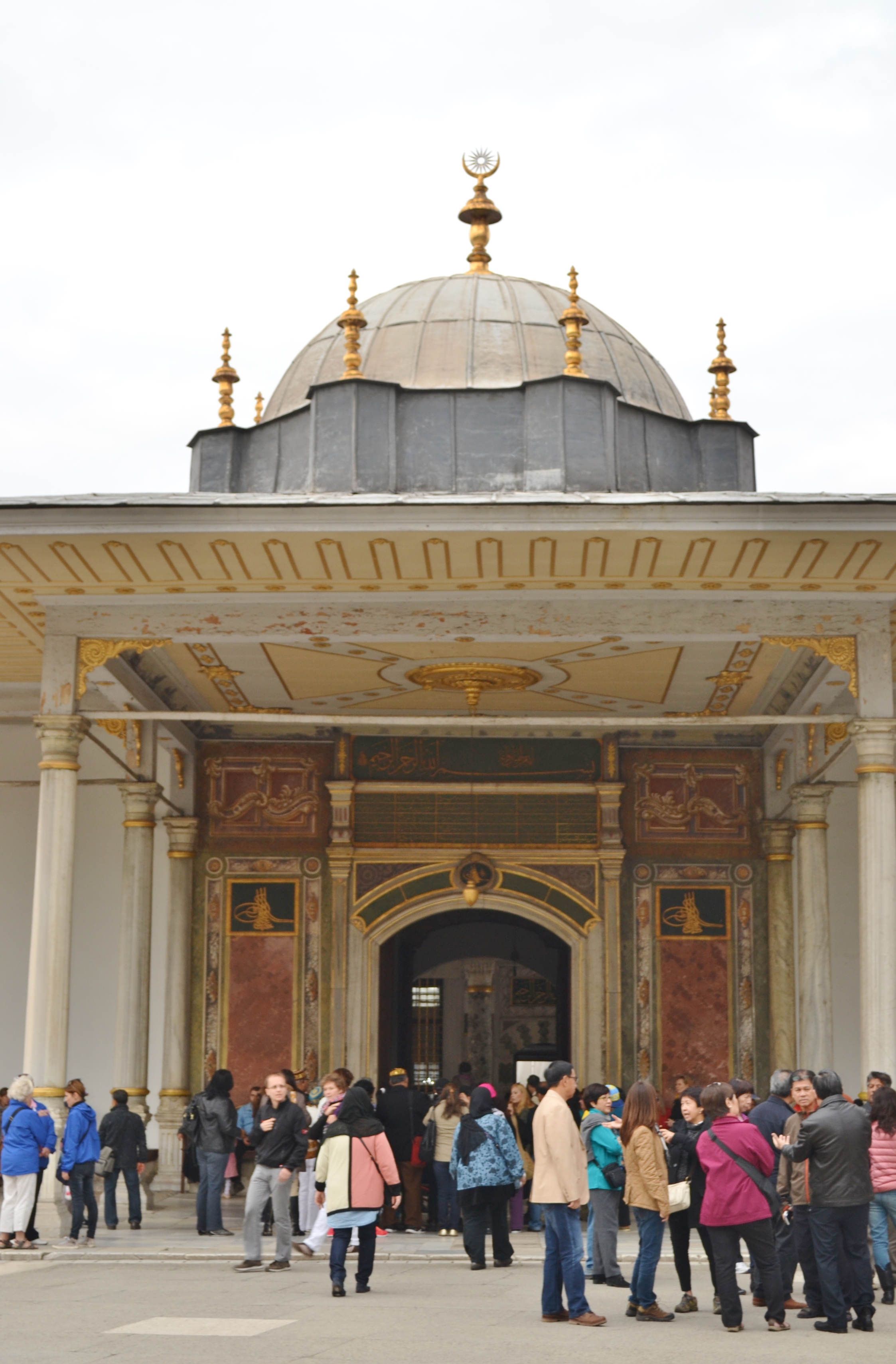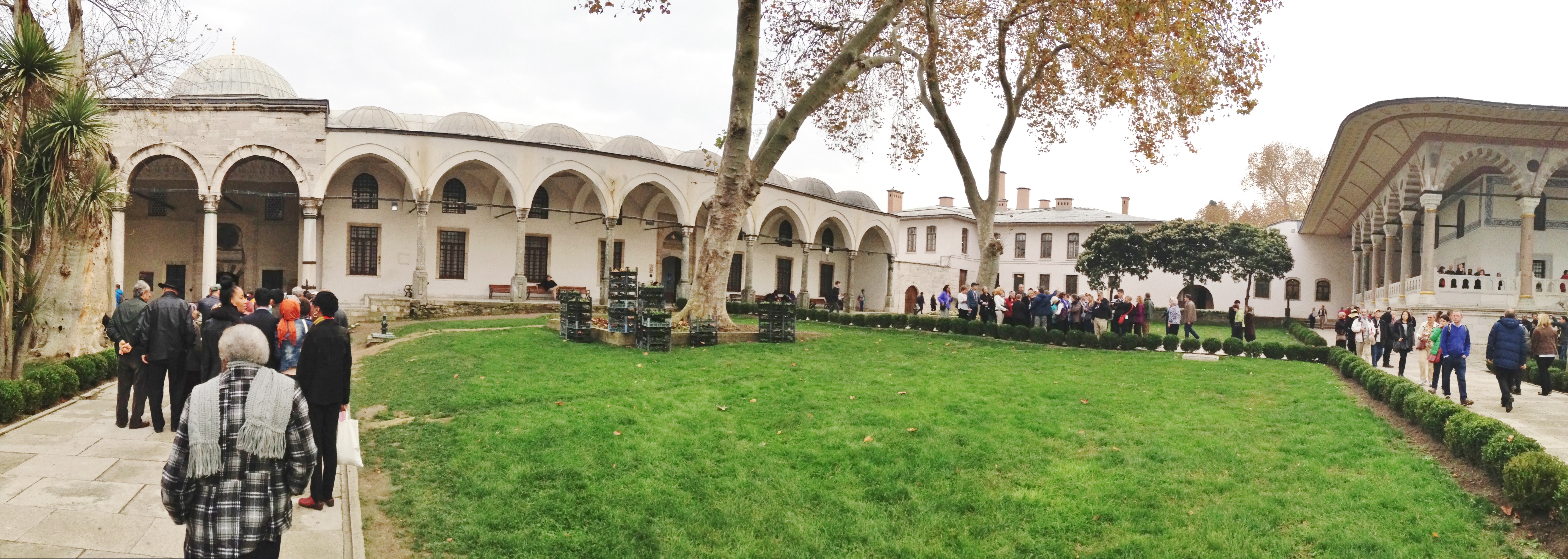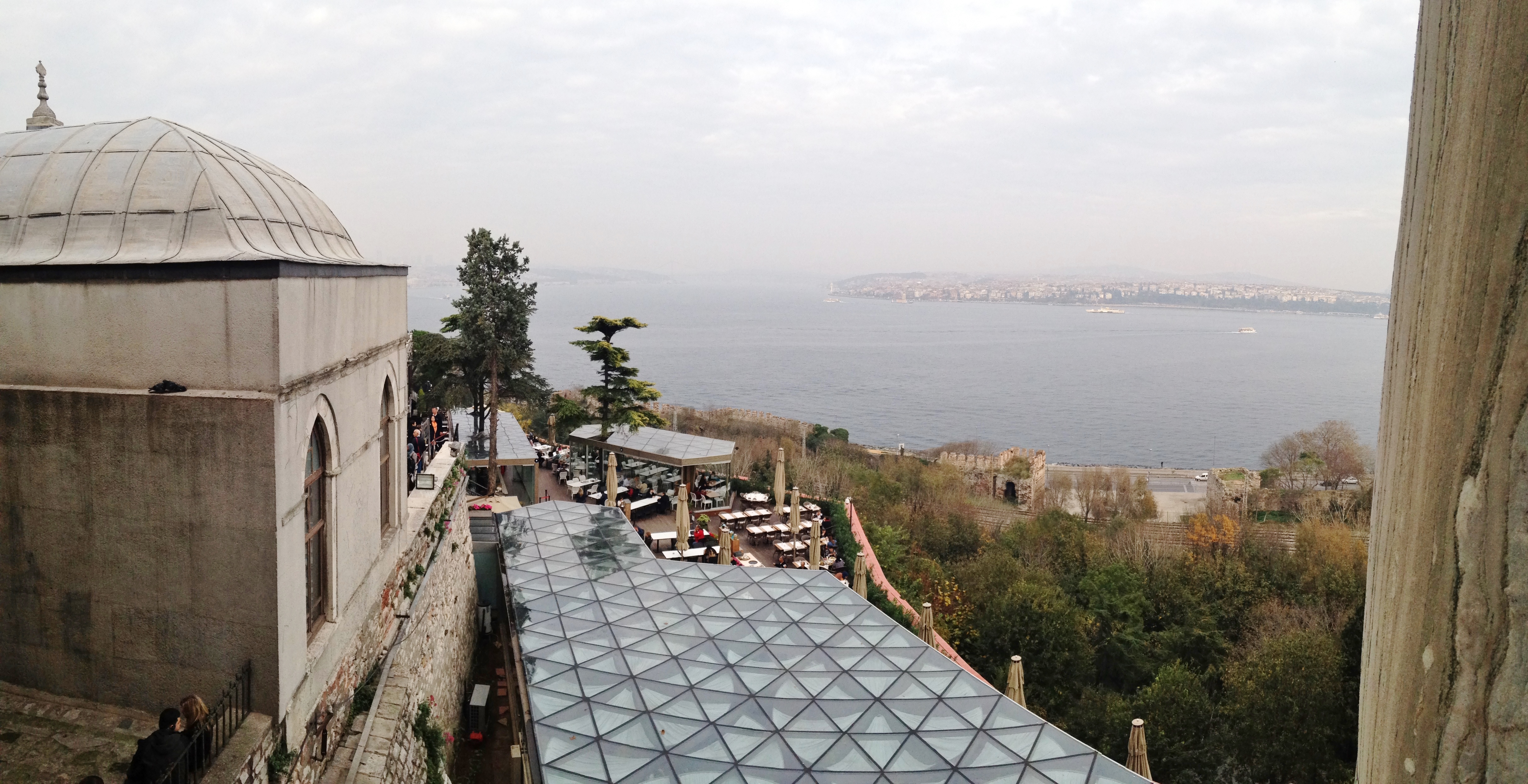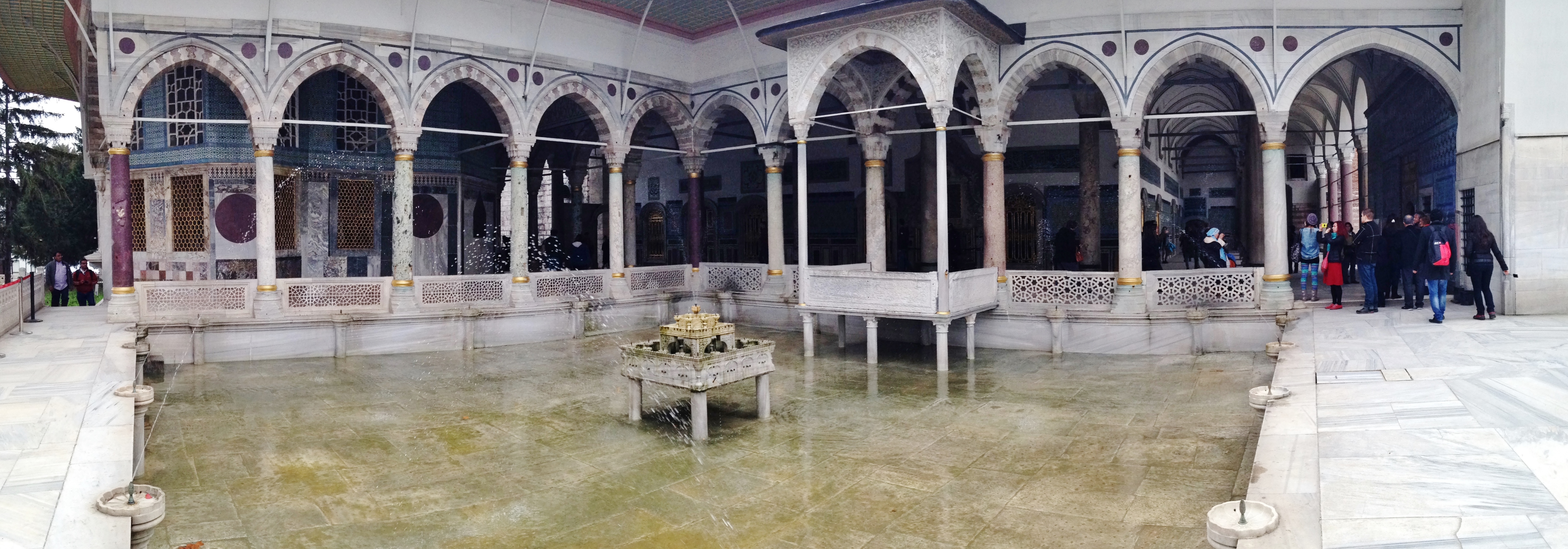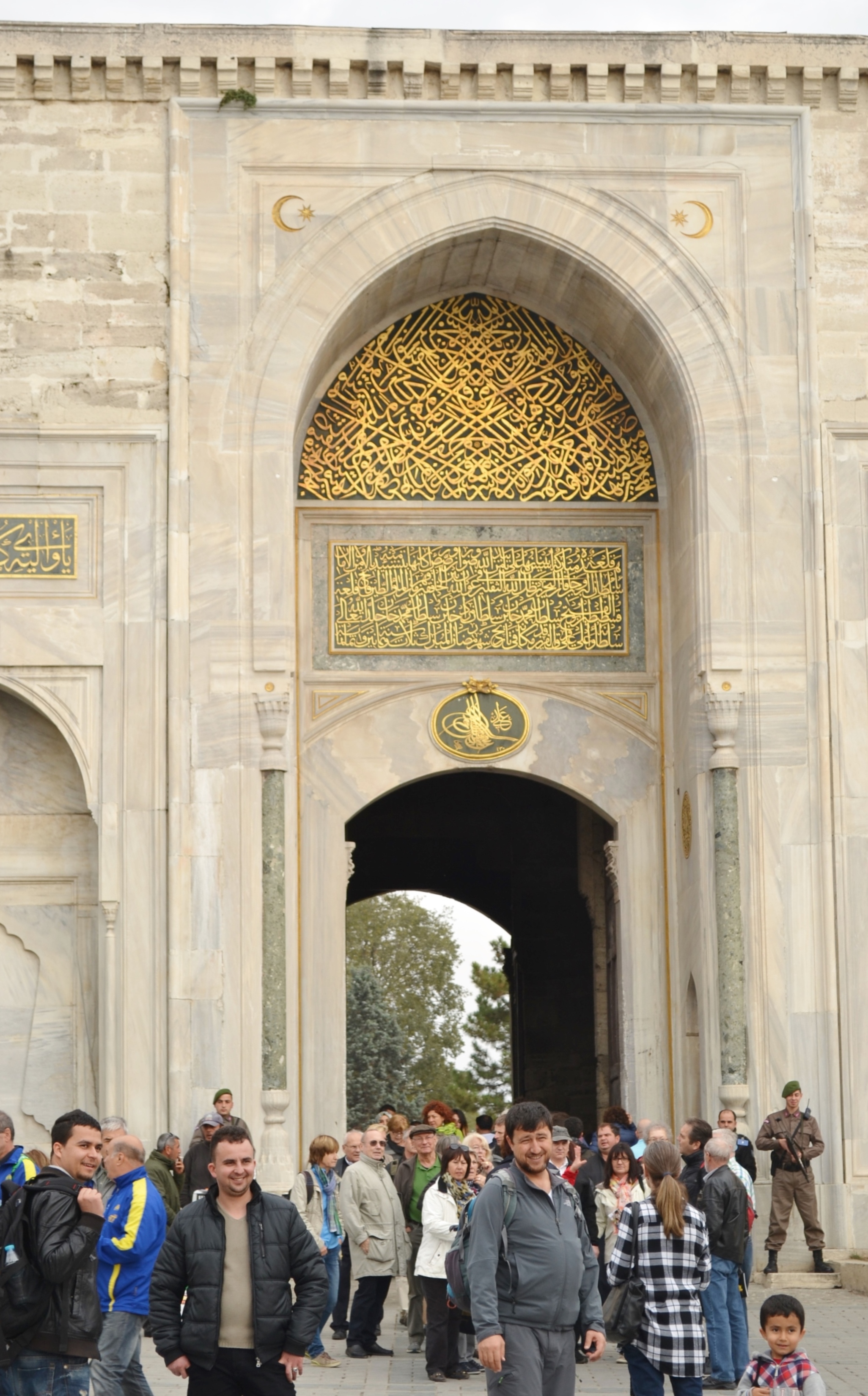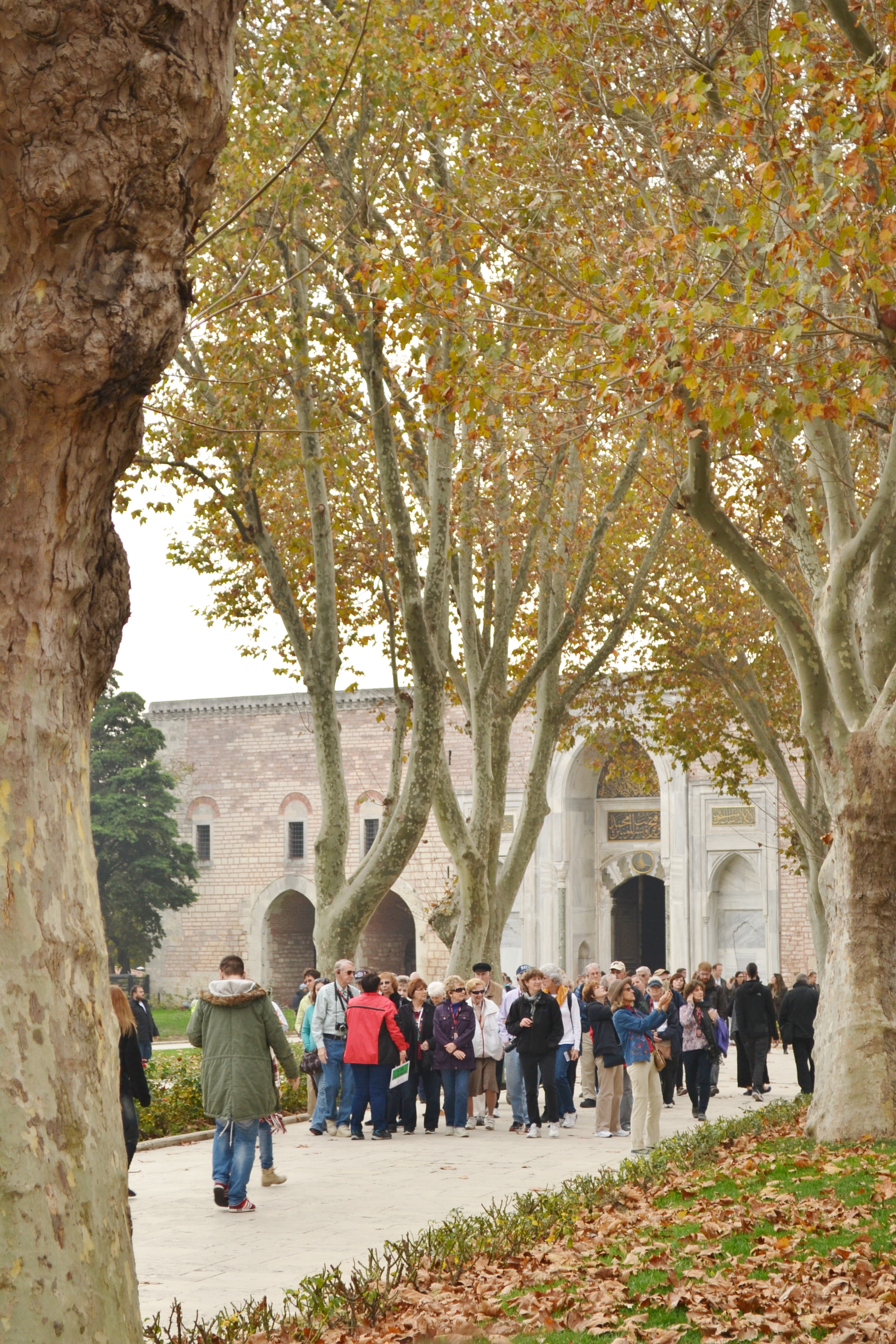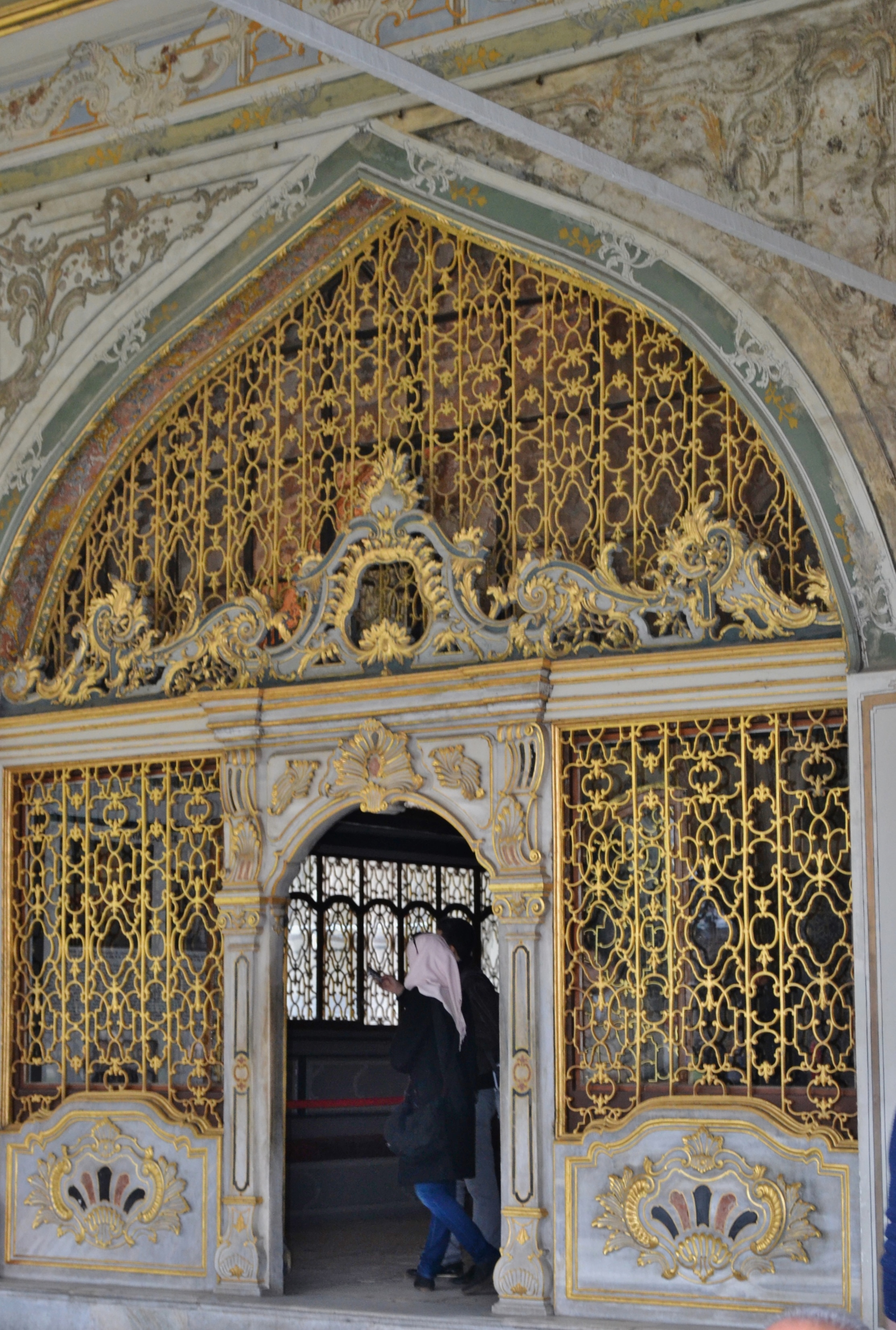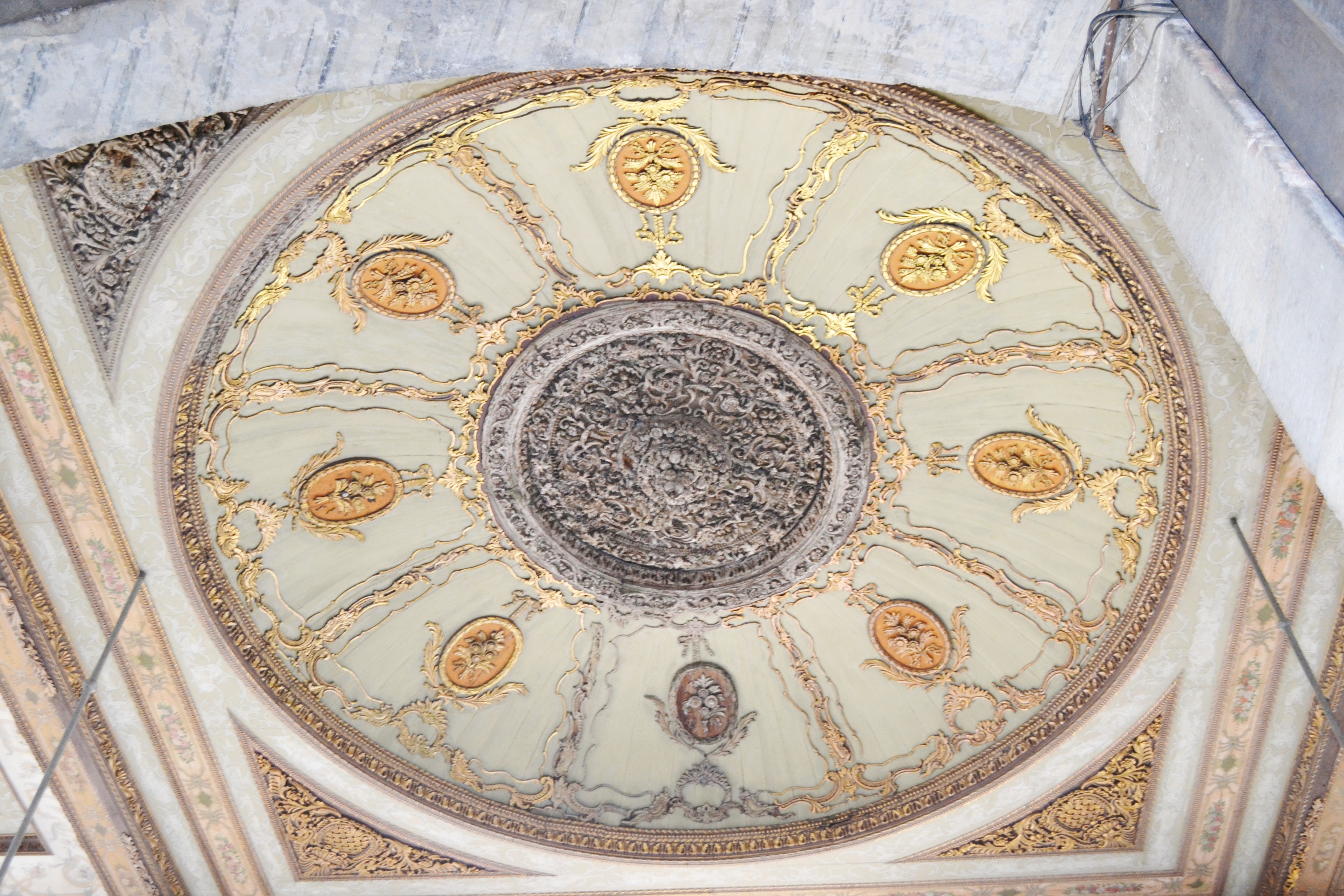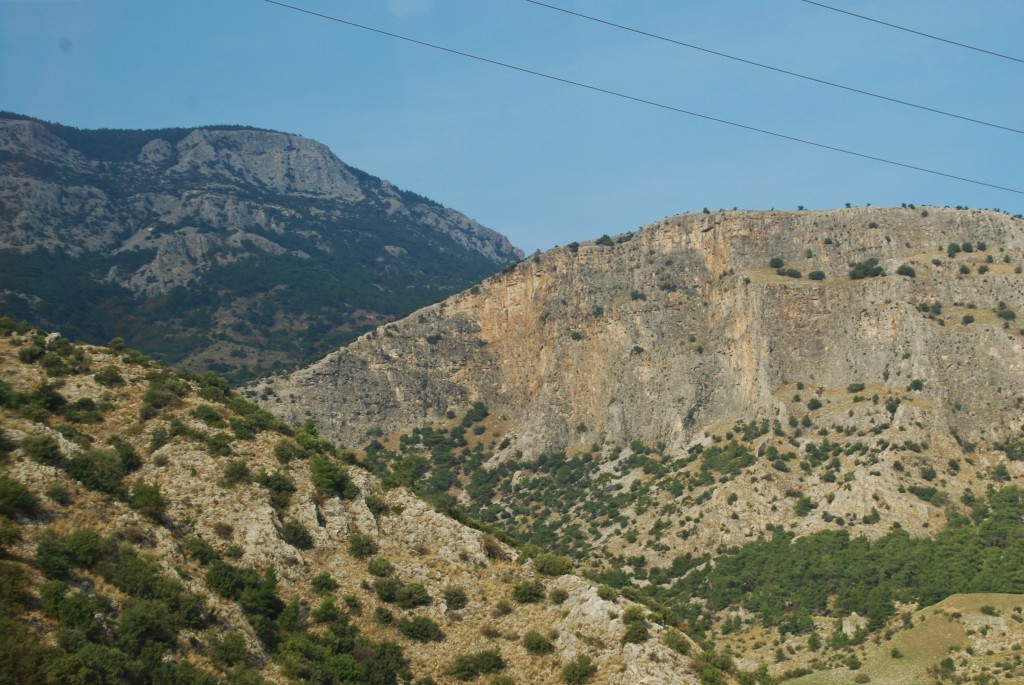 The mountains surrounded us as the road twisted and turned towards our destination to Turkmen Carpet Weaving Center. The weather was perfect as the sun shone down on our tour bus having just spent the afternoon in Ancient Ephesus.
The mountains surrounded us as the road twisted and turned towards our destination to Turkmen Carpet Weaving Center. The weather was perfect as the sun shone down on our tour bus having just spent the afternoon in Ancient Ephesus.
Entering the center, there were magnificent Turkish carpets on display. Ranging from cotton to silk, the colors were absolutely vibrant and more spectacular than I could have ever imagined. We spent the day learning the art of carpet-making and had the opportunity to purchase one of their priceless floor coverings or specialty wall hangings.
I was mesmerized by the blue-colored threads that took on the deep blue hue of the ocean. This specific color stood out against the multi-colored backdrop of a myriad of royal colors. From runners to large area floor and wall carpets, there was a wide range of options, sizes and materials ranging from $500 to $50,000. While some of the carpets were created from camel or goat hair, it was the silk rugs that were the most popular and lucrative, bringing in thousands of dollars.
The artistic creativity of designing Turkish silk carpets begins with the silkworms themselves. The cocoon, which has been woven with serecin, is moistened with the use of hot water until it is time to remove the silk layer of the outer shell. The small tiny egg covering protects the worm inside. Holding it in my hand, it was lightweight and hollow. Shaking the egg, I could hear the worm inside.
Once the eggs have been moistened, the threads are ready to be “reeled” to create one strong strand.
Several “strings” are then combined into one thread and then transferred to a spool. From this stage, it will be dyed and ready for the weaving process.
Turkmen Carpet Weaving Center offers village weavers the ability to continue their family tradition of creating gorgeous designer carpets that have been passed down for many generations. Several looms were available and depending on the size of the rugs, it can take months before these masterpieces are complete.
Having concluded our educational lesson in carpet making, we were offered refreshments as carpets were being prepared for demonstration. We had the choice of red or white wine, raki (similar to ouzo) or apple tea. The apple tea (so yummy!), which is popular among the Turks, is a warm cider drink which was very refreshing.
We took our seats at the benches surrounding the room. Once everyone had received their drink, an entertaining “dance” of sorts was performed as carpets were rolled out for our consideration. It was overwhelming with so many shapes, sizes, colors and materials yet the show was a sight to remember.
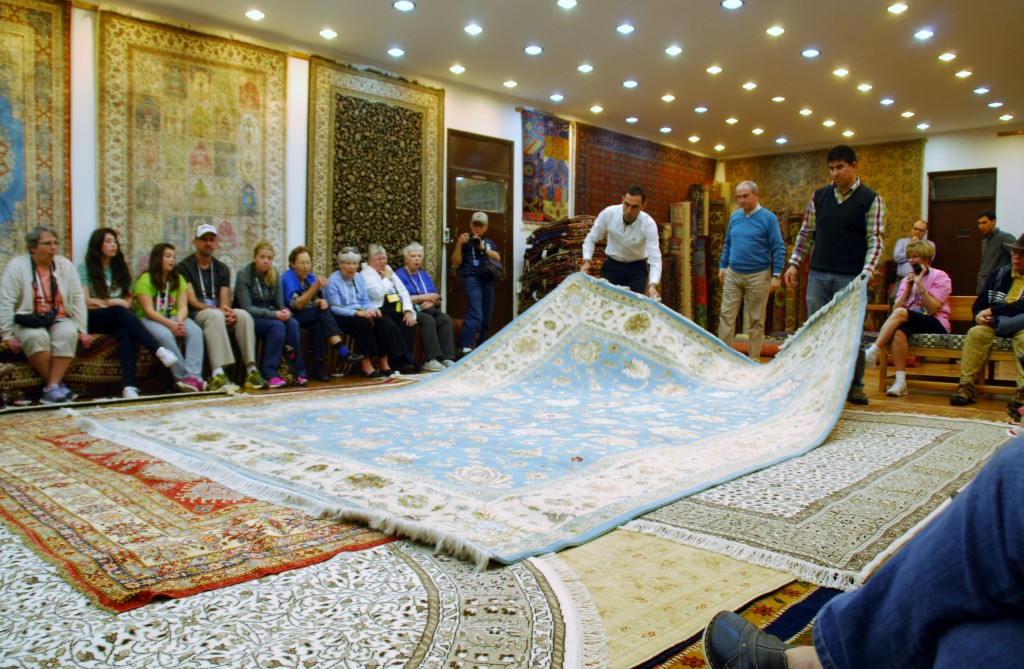
One of my favorite rugs was a light blue with hues of light brown and off-white accents. Unfortunately, I knew it would not fit into my small living room, but I was still curious to learn the price for this amazing piece of artwork. I was even more amazed when I learned that the price tag was a staggering $14,000!
I realize that these spectacular rugs are probably worth every penny spent on them and will last for years, but I was not financially prepared to make the investment. I had such a great time watching my fellow travelers make their purchases.
Do you own a Turkish carpet? Have you ever been curious to learn how they are made? I would love to hear about your visit to Turkey and some of the items that you may have purchased if you would kindly leave a message in the comments section below. Many thanks for reading my post about my experience with Turkish carpets and wishing you many Happy Travels!
What to See and What to Do:
Turkmen Carpets
Telephone: 0232 893 12 12
- Admission Fee: There is no admission fee and tour groups are provided with admission free of charge as well.
- Hours: The carpet center is open every day from 9AM to 5PM
- Amenities: They provide a carpet making demonstration from the time they prepare the silk to the finished product. In addition, they provide a complimentary drink which includes, red or white wine, raki (similar to ouzo) and apple tea.
- Length of Visit: 1 – 2 hours
- Tips for Your Visit: Don’t be afraid to negotiate the price as this is customary and do not be afraid to let them know you are not interested because they do not want to pressure those not interested in buying. Expect to spend money here should you decide to buy a carpet, but they are superior in quality.
Where to Stay;
DoubleTree by Hilton Kusadasi
Ataturk Bulvan
Yat Limani Karsisi
09400 Kusadasi, Turkey
Telephone: +90 256 633 60 60
Website:
Where to Eat:
Erzincan Restaurant
Camikebir mah
Yedi Eylul Sok, No. 09
Kusadasi, 09430 Aydin
Telephone: +90 538 2300230
I enjoyed the seabass served with chips, baked potato and salad.
What to Eat:
-
- Baklava: made with puffed pastry, this dessert has chopped nuts (my favorite is pistachio), and is covered in honey.
- Gozleme is a type of bread that is shaped in a square and stuffed with various fillings such as meat, cheese, potatoes or vegetables and then cooked over a griddle. The cheese and spinach reminds me of spanikopita.
- Iskender Kebab: thinly sliced lamb is smothered in tomato sauce and served with traditional bread, then topped with yogurt and butter.
- Mezze is a sample of several small bites that may include yogurt with herbs, hummus, olives, dolmas (stuffed grape leaves), meatballs, eggplant, white cheese and warm bread.
- Simit is a fun street food bread that is similar to a pretzel.
- Turkish Apple Tea is absolutely amazing and was one of my favorite drinks while visiting Turkey.
- Turkish Delight: a delicious dessert is made up of dates, pistachios, hazelnuts, which is pink in color.
- Turkish Ice Cream, also known as Dondurma, is a little thicker in consistency, but it will not melt. A must try.
- Turkish Pizza is outstanding and tastes so fresh. Made from Turkish Pide (a type of pastry), it is similar to a flatbread with a variety of toppings.
- Turkish Ravioli: dumplings stuffed with beef or lamb served with yogurt.
What to Read:
- The Ephesus Scroll by Ben Chenoweth
- Burning of the Books at Ephesus by Sir James Thornhill
- Ancient Ephesus: The History and Legacy of One of Antiquity’s Greatest Cities by Charles River Editors
Photo Guide for Ancient Ephesus:
- The Facade of the Celsus Library
- View from the Amphitheater
